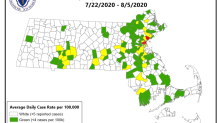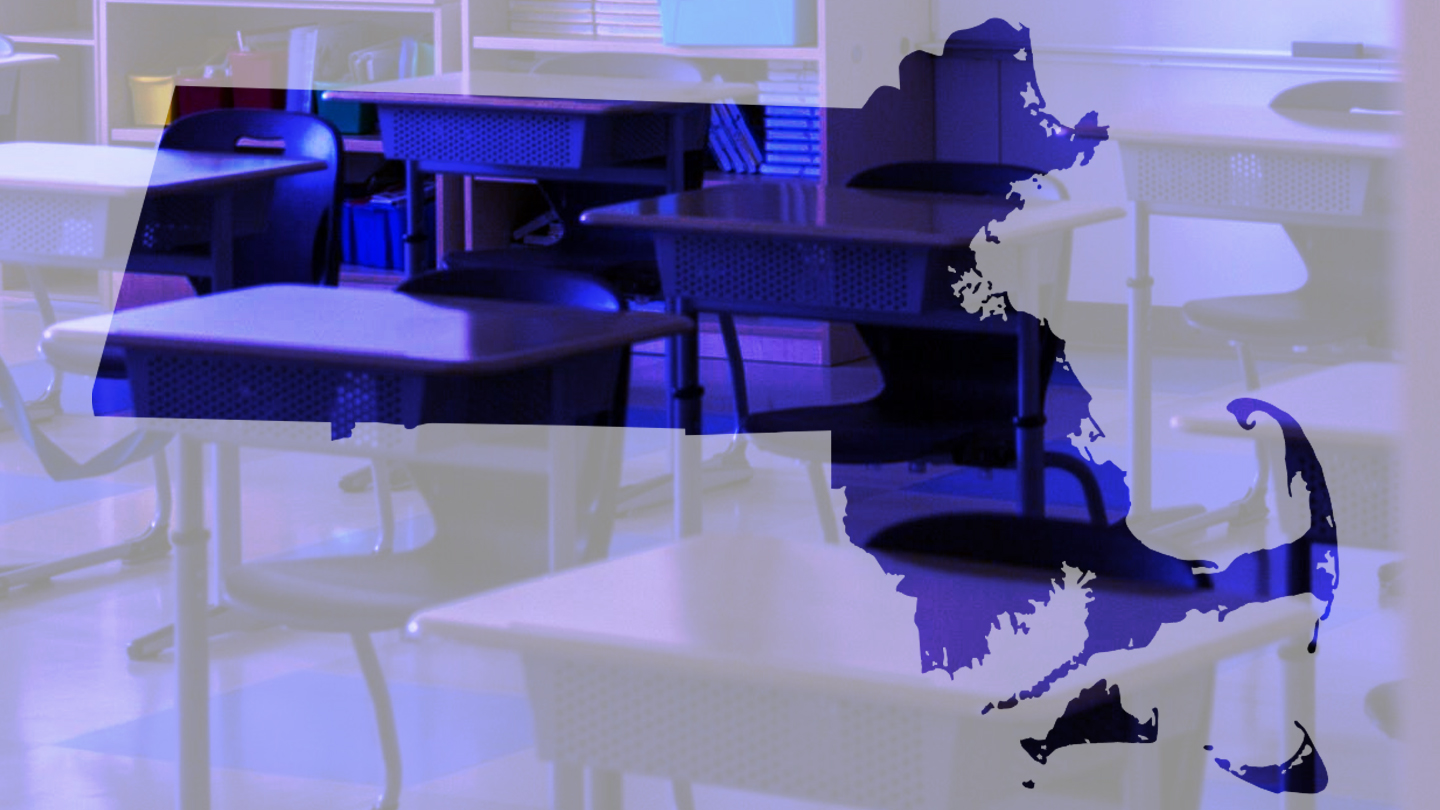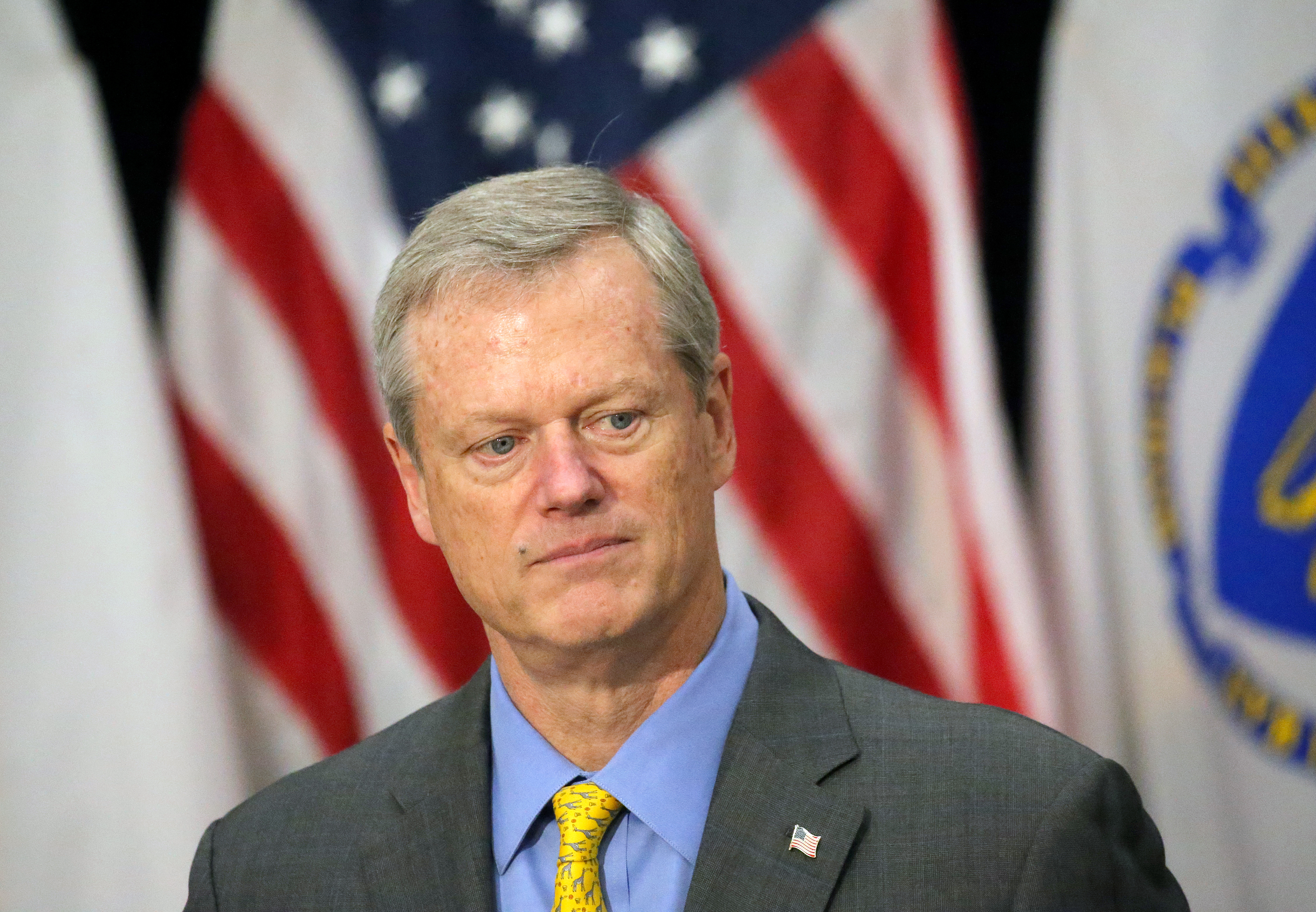Most of Massachusetts -- all but 33 communities -- have low enough rates of coronavirus spread that they should be able to safely open schools for at least some in-person learning this fall, Gov. Charlie Baker said Tuesday.
The comment comes as many school districts finalize whether students will be brought back to classrooms for the fall semester -- a fraught issue for many parents.
Baker had announced at a news conference that Massachusetts is breaking down community-level coronavirus data to identify where the virus is currently spreading more than elsewhere.
Thirty-three communities are at moderate or high risk, meaning they have, on average, 4 or more daily cases per 100,000 residents. But the rest of the state's 318 communities are considered at low risk, and Baker said Tuesday that means they are doing well enough for kids to return to classes.
"I can't imagine a good reason not to go back, whether it's full-time or in some sort of a hybrid because, for all intents and purposes, you meet all of the benchmarks that are being used across the country and across New England to make decisions about whether it's safe to go back to school," Baker said.
The reason the state is breaking down coronavirus cases by community is so people know how much they need to minimize risky behavior based on what's happening in their area.
"Part of why we're sort of doubling down on community-specific data is to make sure that everyone knows what's going on in their community using these percent positive rates and cases per hundred thousand rates," Baker said, referring to two commonly used COVID-19 metrics.
If the community's coronavirus outbreak is higher on average than the rest of the state, locals need to take greater care than others elsewhere. But if it's lower than average, they are in a safer place to allow more things to reopen. That would seem to be the case for the communities Baker said are in green and white, as seen in the map below.
"It's a good set of guidance, it's the right kind of advisories and, contextually, those communities are in a perfectly appropriate place to have kids back," Baker said.

The announcement comes days before schools in Massachusetts have to file their "final" plans for reopening with the state. Ahead of the Aug. 14 deadline, many officials have struggled with the right way to reopen.
Remote learning is difficult for many students, but sending students to classes together may spread the virus quickly, endangering them, their families, teachers and school staff.
Boston Public Schools, the state's largest district, hasn't made a final decision on its reopening plan, but has discussed a hybrid model. The city is at moderate risk, according to the new community data released Tuesday.
Parents who spoke to NBC10 Boston Tuesday said there shouldn't be a one-size-fits-all approach to reopening. In districts with fewer cases, kids should be back in school.
"It really should be up to the parents to decide what is best for their families in terms of the risks they are willing to take," said Marshfield parent Kellie McDonald, who wants to see her kids return to the classroom.
The group Bring Kids Back MA is planning a rally at the Massachusetts State House Wednesday to urge Baker to take a larger role in the school reopening debate.
"I think we have to let data drive this and metrics drive this because, somehow, I feel like our education for our children has become an optional service when really there is a right to education," said Antigone Grasso of Westwood, a member of the group.
Baker has recently argued that it's important for students to be in classrooms, if it can be done safely -- especially younger ones.
"First, second and third graders…trying to teach those kids how to read remotely? That’s not how you teach kids how to read," Baker said at a news conference on Friday. "You teach kids how to read phonetically, with repetition and with individualized attention.”
He and Education Commissioner Jeffrey Riley have pushed for districts to open if possible, but some districts have opted to start the year with remote learning.
On Tuesday, Framingham Mayor Yvonne Spicer, a former teacher and school administrator, sent a letter to families outlining the many factors that need to be weighed when reopening schools in the city, which is at moderate risk of the virus, according to the Department of Public Health data, including people's health, parent's need for child care, providing food for students and more.
"In all that I have observed, and with the subtle nuances that must be considered that come with reopening in these unprecedented times, there is no perfect solution," she said.



